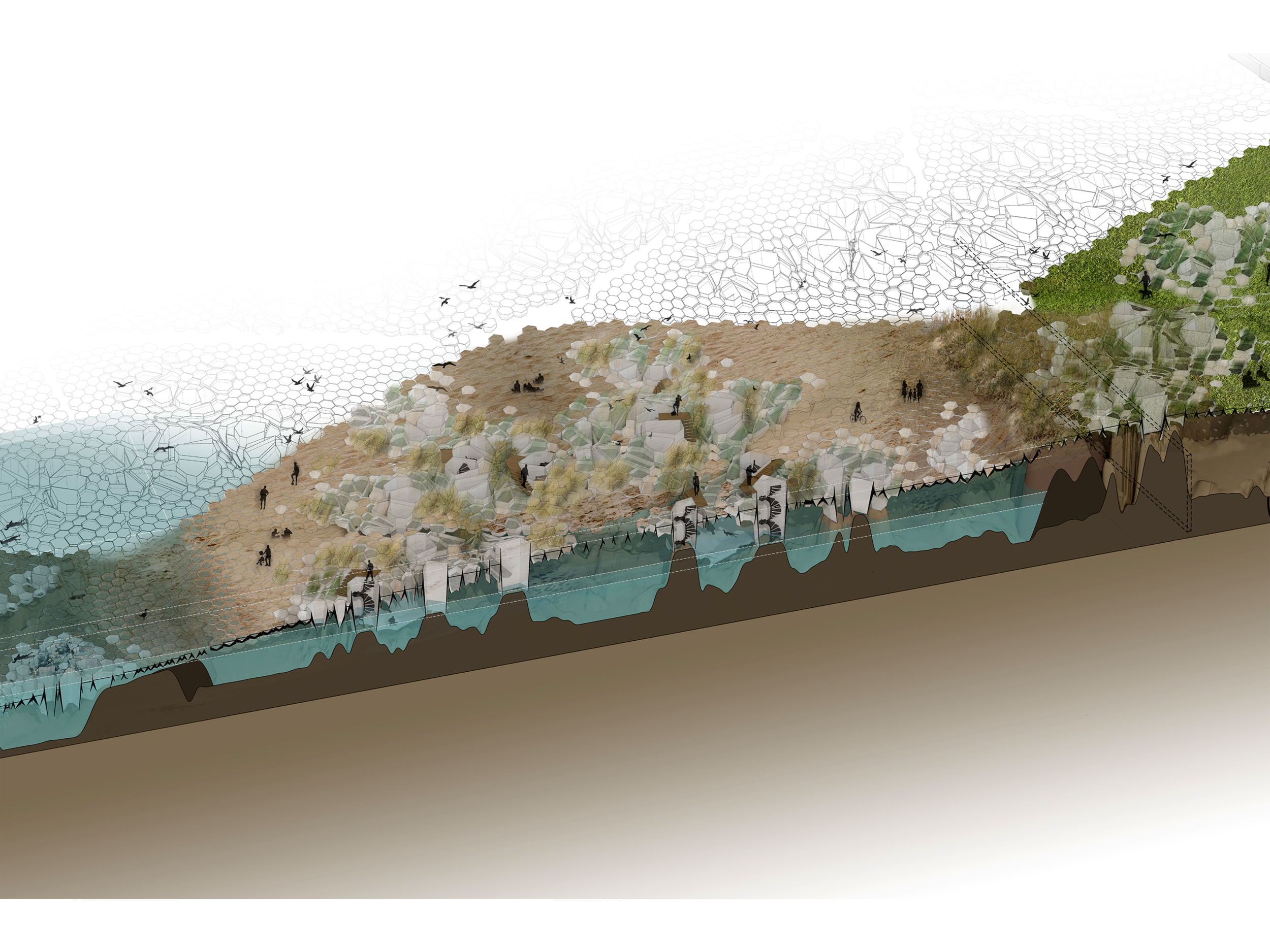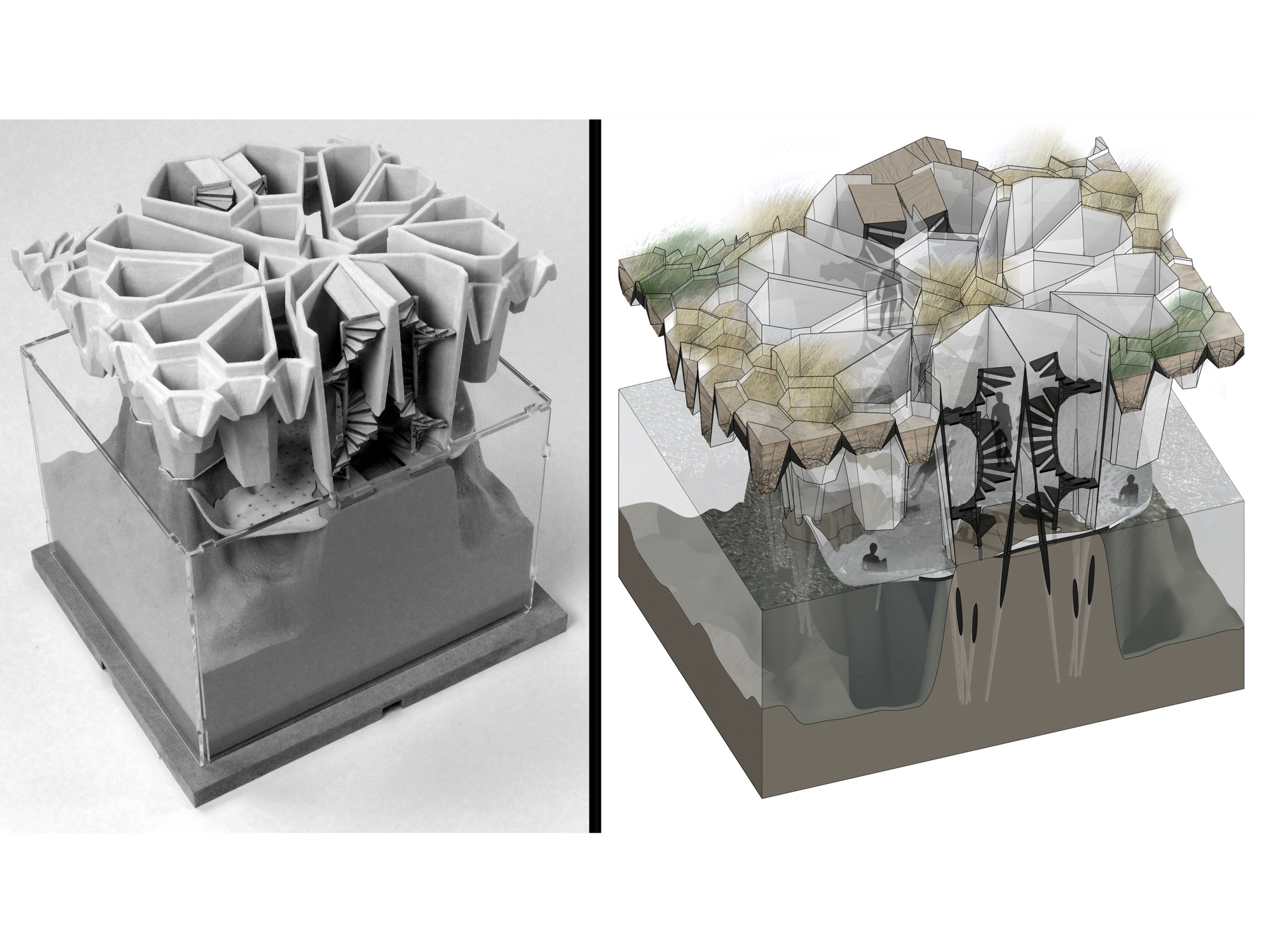Synchronic Boundary






With the increasing number of super-storms expected to impact coastal cities in the coming century, due largely if not exclusively to the global effects of climate change, a new approach must be established in regards to the design and construction of urban boundaries. This shift is philosophical in nature and comes at a time when humans must rethink the conventional relationship between the built and unbuilt environment.
The traditional approach to shielding cities from outside forces by building hard barriers is rooted in an anthropocentric ideology of self-preservation. Synchronic Boundary takes a fundamentally different approach by dissolving the hard barrier of the traditional waterfront as a means of transforming it into an absorptive membrane capable of harnessing wave energy as well as the excess water that comes with coastal flooding.
In doing so, the proposal acknowledges and embraces tidal forces as a fundamental aspect of the urban environment in an age of climate change. Implemented through the use of a new porous shoreline and infrastructural retrofit, the city is now able to harness floodwaters for a wide variety of natural as well as artificial uses. Through a reconceptualization as well as reconstruction of the traditional urban waterfront, Synchronic Boundary seeks to establish a new coexistence between the human and the non-human, thereby shifting conventional forms of human perception and cognition in an age of existential threat and environmental crisis.
Project Date: 2017
CASE Faculty: Chris Perry, Ted Ngai
Student Researchers: Joe Gibney (MSArch)
